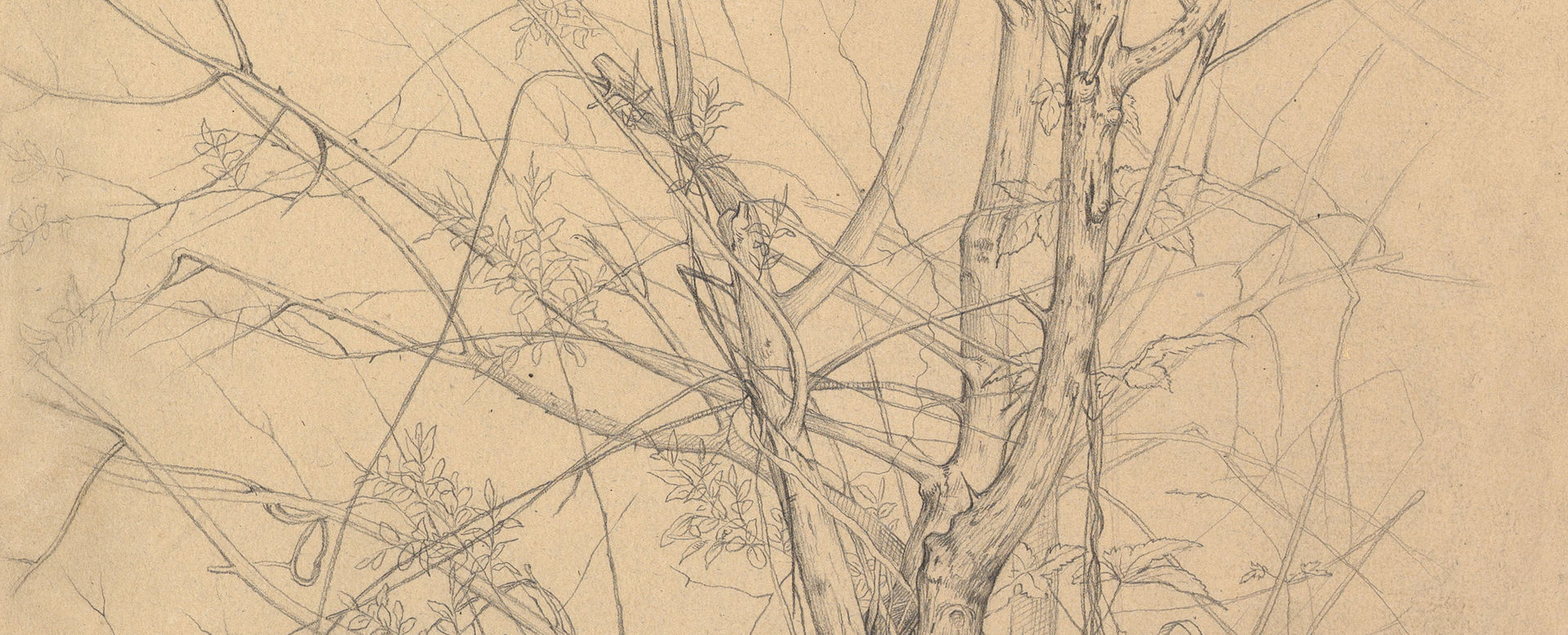Design for a Belt Buckle with a Peacock and Flowers, created after an image of the jewel designed by Eugène-Samuel Grasset and manufactured by Maison Vever in 1900
Anonymous, French, 19th century French
After Eugène-Samuel Grasset French
After jewel manufactured by Maison Vever French
Not on view
Drawing with a design for a belt buckle, created after the a jewel manufactured by Maison Vever in 1900 and designed Eugène-Samuel Grasset, part of an album of drawings by various artists for individual pieces of jewelry, containing a variety of designs in the Art Nouveau style of the late nineteenth and early twentieth century, as well as some pieces in historic period styles. The design consists of an oval frame made up of a thin, elongated peacock with closed wings that scrolls around itself, his beak touching the tip of his tail, to form the shape of an O. The peacock is standing on a thin branch with small, stylized leaves, and a thin branch, which opens into several thinner branches with small, stylized leaves and stylized daisies (?), transverses the center of the frame created by the body of the peacock. The design is executed with graphite, showing only the outlines of the design, but without any suggestions of color. The executed jewel, however, would have likely been very colorful and lively, and would have been created using a combination of stones and enamel over a golden body. The design reveals the aesthetic of the Art Nouveau jewelry style, designed, among others, by Rene Lalique, which drew inspiration from antiquity and japonism, abandoning the exclusive use traditional precious stones in the manufacture of jewels, and using, instead, a combination of gold, gemstones, semi-precious stones, mother-of-pearl, ivory and horn, enamel, and glass, to create colorful, powerful, and sinuous designs, often presenting animal and other figurative motifs.
To the right side of the belt buckle are close-up sketches of the motifs decorating the wings of the peacoch, and of his leg on the branch. It is likely that the drawing was made by a student or young designer, after an original design, and that these sketches were done to practice the execution of details in the design.

